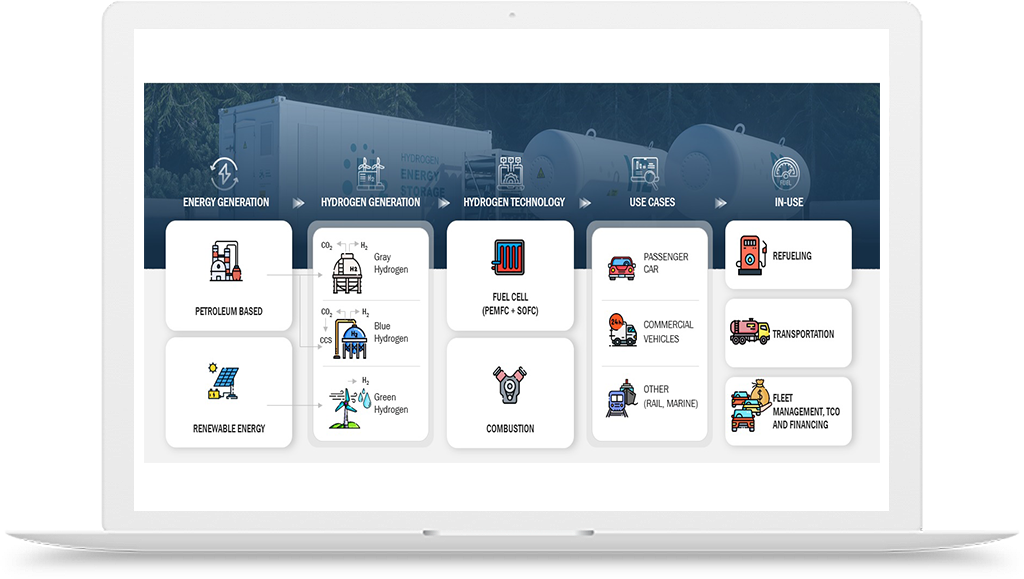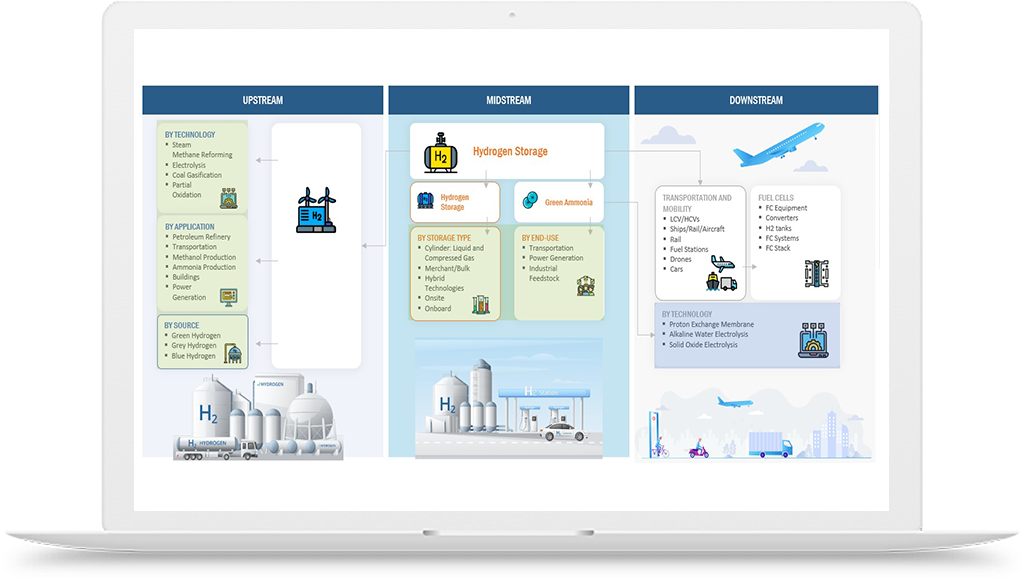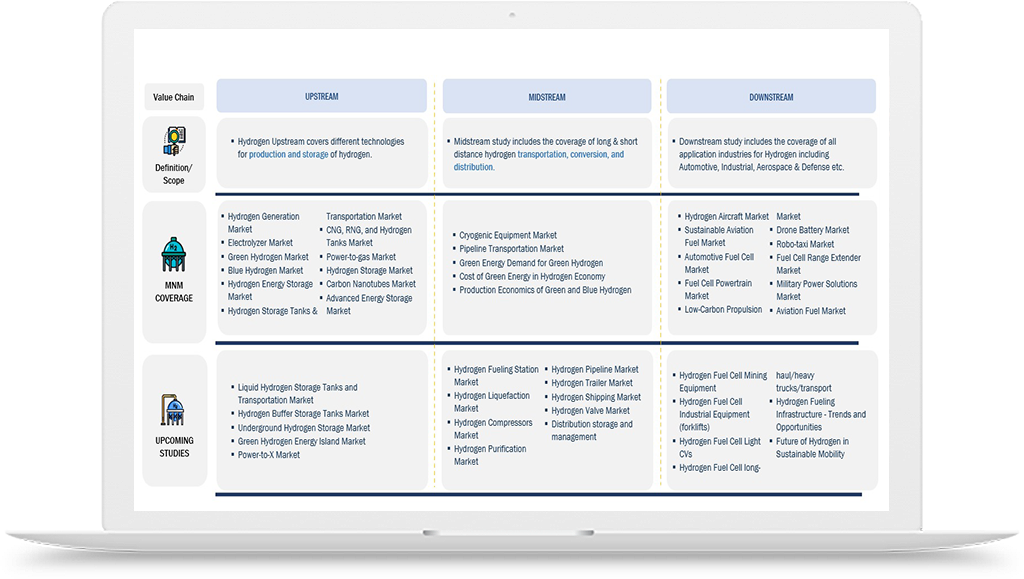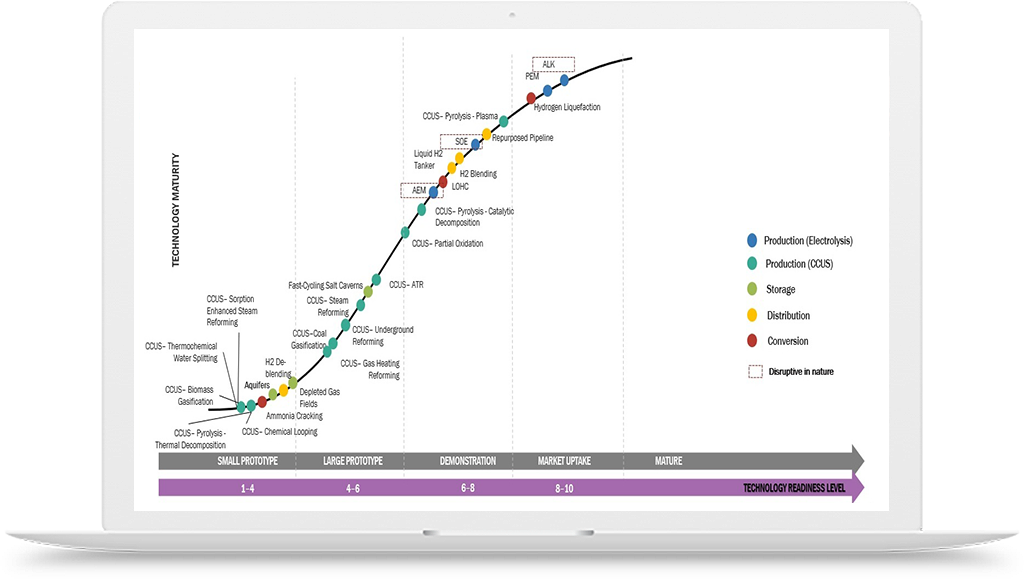Hydrogen End-Use Applications
It is necessary to develop and implement sector-specific hydrogen technologies in order to integrate hydrogen end-use applications in the automotive, marine, industrial, and aviation industries. An overview of the integration of hydrogen into different businesses is provided below. Its distinct qualities make it a viable option for a range of Hydrogen End-Use Applications across industries, supporting the global transition to low-carbon and sustainable energy sources.
-
Hydrogen End-use Application in Automotive Sector:
Fuel Cell Electric Vehicles (FCEVs): Hydrogen can be used as fuel in FCEVs, which use airborne oxygen and hydrogen to produce electricity in a fuel cell. The car is propelled forward by an electric motor using this electricity. FCEVs are appropriate for a variety of transportation purposes because of their extended driving range and quick refilling times.
Infrastructure for Hydrogen Refueling: A network of hydrogen refueling stations must be built in order to facilitate the adoption of vehicles driven by hydrogen. These stations distribute hydrogen for vehicle refueling after producing and storing it locally or by obtaining it from centralized production facilities.
Efficiency and Convenience: Vehicles running on hydrogen offer both practical and environmental benefits. FCVs bridge the gap between everyday usage and sustainability by providing consumers with an efficient and convenient option through their rapid refilling times and longer driving ranges.
-
Hydrogen End-use Application in Marine Sector:
Hydrogen Fuel Cells for Maritime Vessels:Passenger ferries, cargo ships, and offshore vessels can all be powered by hydrogen fuel cells. Fuel cells offer efficient and clean propulsion, lowering air pollution and greenhouse gas emissions
Bunkering and Hydrogen Storage: The marine industry requires infrastructure for both hydrogen storage and bunkering. This entails creating bunkering stations where ships may refill with hydrogen and developing hydrogen storage systems onboard.
As the maritime industry charts a course towards a more sustainable future, hydrogen emerges as a beacon of hope, offering a clean and efficient alternative to traditional fossil fuels. The diverse hydrogen end-use applications in marine propulsion systems underscore its potential to revolutionize the industry, reduce emissions, and contribute to global efforts to create a more environmentally conscious and sustainable shipping sector. With ongoing advancements and collaborative initiatives, hydrogen is set to play a transformative role in navigating the seas toward a greener horizon.
-
Hydrogen End-use Application in Industrial Sector:
Hydrogen is proving to be a flexible and clean energy source that is transforming the industrial sector as we search for low-carbon and sustainable alternatives. Many Hydrogen End-Use Applications can be found in industrial processes due to its capacity to lower carbon emissions and improve energy efficiency. This piece delves into the revolutionary effects of hydrogen in the industrial domain, emphasizing pivotal uses that foster a more environmentally conscious and enduring industrial environment.
Hydrogen for Industrial Processes: In industries such as refineries, petrochemicals, steel production, and cement manufacturing, hydrogen is used as a feedstock or a process gas. Integrating hydrogen into these industrial processes involves transitioning from fossil fuel-based hydrogen to low-carbon or renewable hydrogen.
On-site Hydrogen Production: Industries with significant hydrogen demand can establish on-site hydrogen production facilities using electrolyzers or other hydrogen production technologies.
-
Hydrogen End-use Application in Aviation Sector:
The aviation industry, a crucial component of international transportation, is currently at a turning point in terms of innovation and sustainability. With its clean energy properties, hydrogen is starting to take the lead in revolutionizing the aviation sector. This article will examine the exciting possibilities of hydrogen end-use applications in aviation, highlighting how they could transform aircraft propulsion systems and open the door to a more environmentally friendly future for air travel.
Hydrogen-powered Aircraft: Hydrogen can be utilized as a fuel for aircraft propulsion systems, which can be powered by hydrogen fuel cells or combustion engines. The aviation industry's carbon emissions might be greatly reduced by using planes powered by hydrogen.
Infrastructure Development: Airport hydrogen storage facilities, hydrogen filling stations, and changes to aircraft design to allow for hydrogen storage and distribution are all necessary to support hydrogen-powered flight.
Stakeholders including infrastructure providers, car manufacturers, technology developers, and regulatory agencies must work together to integrate hydrogen into these industries. It entails resolving technical issues, guaranteeing safety requirements, creating legal frameworks, and encouraging adoption via financial aid and supportive policies. Encouraging innovation and research & development expenditures are essential for enhancing the effectiveness and affordability of hydrogen technology for these final applications.
Here are some examples of hydrogen integration in various industries:
Automotive Sector:
Examples:
Toyota Mirai: The Toyota Mirai is a hydrogen fuel cell electric vehicle (FCEV) that runs on hydrogen to produce energy, which powers an electric motor. With recharging periods similar to those of conventional vehicles, it delivers a range of more than 500 kilometers.
Hyundai Nexo: This hydrogen-fueled FCEV has a similar range and only generates water vapor. It has been implemented in a number of nations, including Europe, the US, and South Korea.
Use Cases
Municipal Fleets: Cities and municipalities have the option to include hydrogen-powered buses and garbage trucks in their fleets. Hydrogen is a practical alternative for effective and environmentally friendly public transportation since these vehicles may travel set routes and return to centralized filling facilities.
Long-Haul Trucks: Heavy-duty freight can be transported without emitting any emissions when hydrogen fuel cell technology is utilized in long-haul trucks. Long-distance operations can benefit from the range and speedy refilling that hydrogen-powered trucks can offer.
Marine Sector:
Examples:
Viking Energy: Powered by hydrogen fuel cells, Eidesvik Offshore is developing the Viking Energy, an offshore hydrogen-powered vessel. When compared to traditional diesel-powered vessels, the North Sea-capable vessel will emit substantially fewer emissions.
MS Hydroville: is the first passenger ship in Belgium to be certified to run on hydrogen fuel cells. It serves as a shuttle service for travelers and commuters, showcasing the viability and eco-friendliness of hydrogen in the marine industry.
Use Cases:
Passenger Ferries: Hydrogen can be utilized in passenger ferries operating in coastal areas and inland waterways. Hydrogen fuel cell systems enable zero-emission transportation for commuters and tourists, reducing the environmental impact of marine transport.
Offshore Support Vessels: Hydrogen-powered vessels can be employed in the offshore sector, supporting operations in the oil and gas industry, offshore wind farms, and other offshore installations. These vessels offer clean and efficient alternatives to conventional diesel-powered support vessels.
Industrial Sector:
Examples:
Covestro: A well-known producer of polymers, Covestro has a production facility in Germany that runs on hydrogen. In order to reduce carbon emissions, the plant uses hydrogen produced on-site through electrolysis to substitute fossil fuels in its chemical production operations.
Salzgitter AG: A German steel manufacturer, Salzgitter AG is investigating the application of hydrogen in steelmaking procedures. To achieve considerable emissions reductions, the business plans to replace conventional blast furnace technology with direct reduction methods based on hydrogen.
Use Cases:
Refineries: Hydrogen is a necessary feedstock for hydrotreating and hydrocracking, two procedures used in refining. Refineries can cut emissions related to the manufacture of gasoline, diesel, and other refined goods by switching to low-carbon hydrogen.
Ammonia Production: Hydrogen is a necessary component of ammonia production, which uses it as a feedstock to make fertilizer. The ammonia sector can help support sustainable agriculture and lessen its carbon impact by implementing low-carbon or green hydrogen.
Aviation Sector:
Example:
Airbus's ZEROe: program has resulted in the unveiling of several hydrogen-powered aircraft ideas by the well-known aircraft maker. Aiming to lessen the aviation industry's carbon impact, these concepts feature zero-emission, hydrogen-fueled aircraft designs for a range of capacities and distances.
Utilization Examples:
Regional Air Travel: Low passenger capacity regional aviation routes can be served by hydrogen-powered aircraft. Reducing carbon emissions in the aviation industry, these aircraft provide the possibility of zero-emission regional air travel.
Unmanned Aerial Vehicles (UAVs): Unmanned aerial vehicles, can fly for extended periods of time for surveillance, mapping, and other uses by integrating hydrogen fuel cells into the vehicle. In comparison to battery-powered counterparts, UAVs driven by hydrogen have longer flight durations.
















